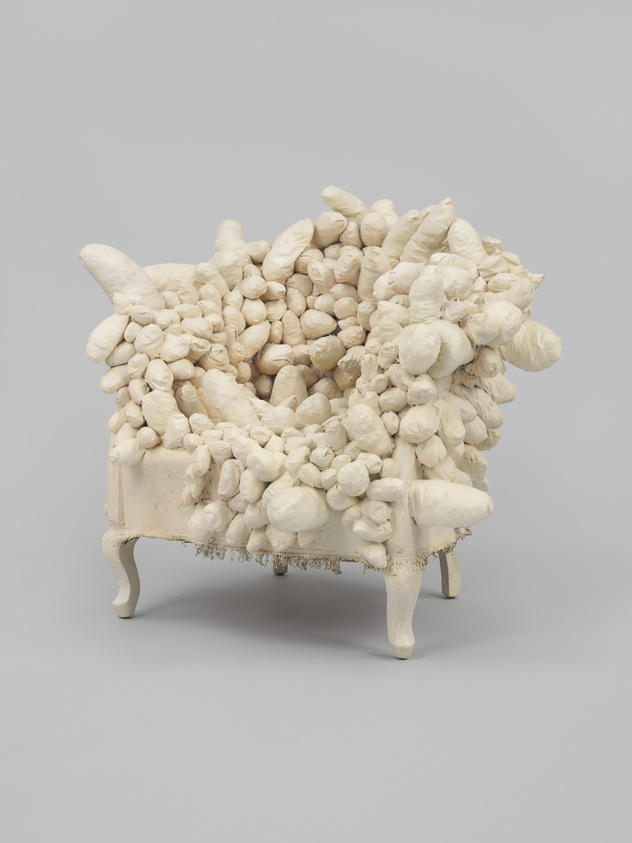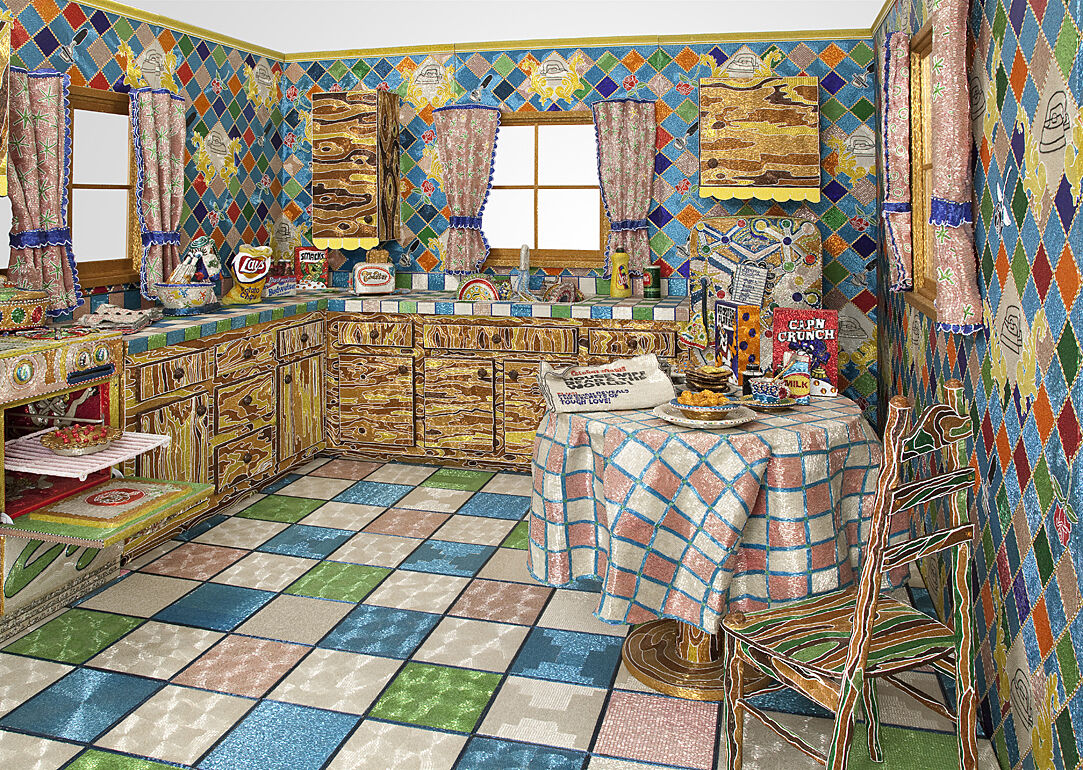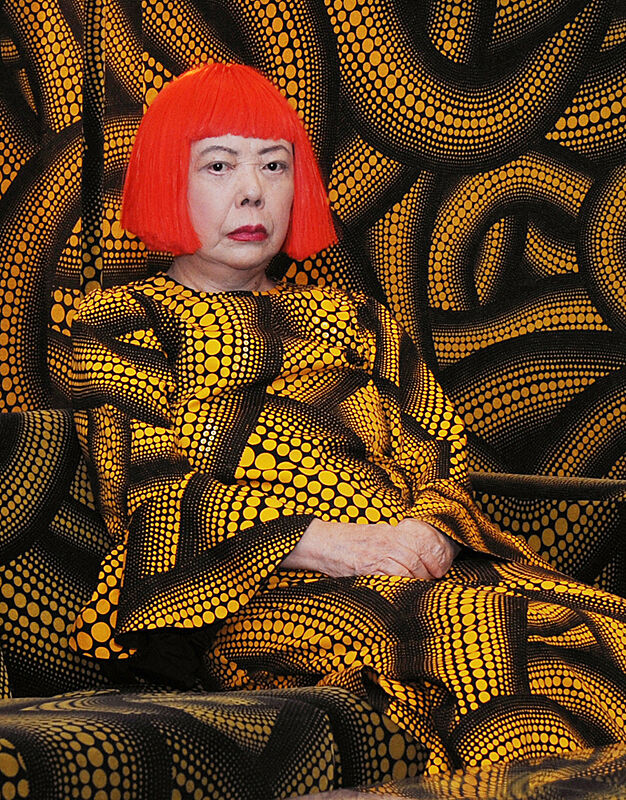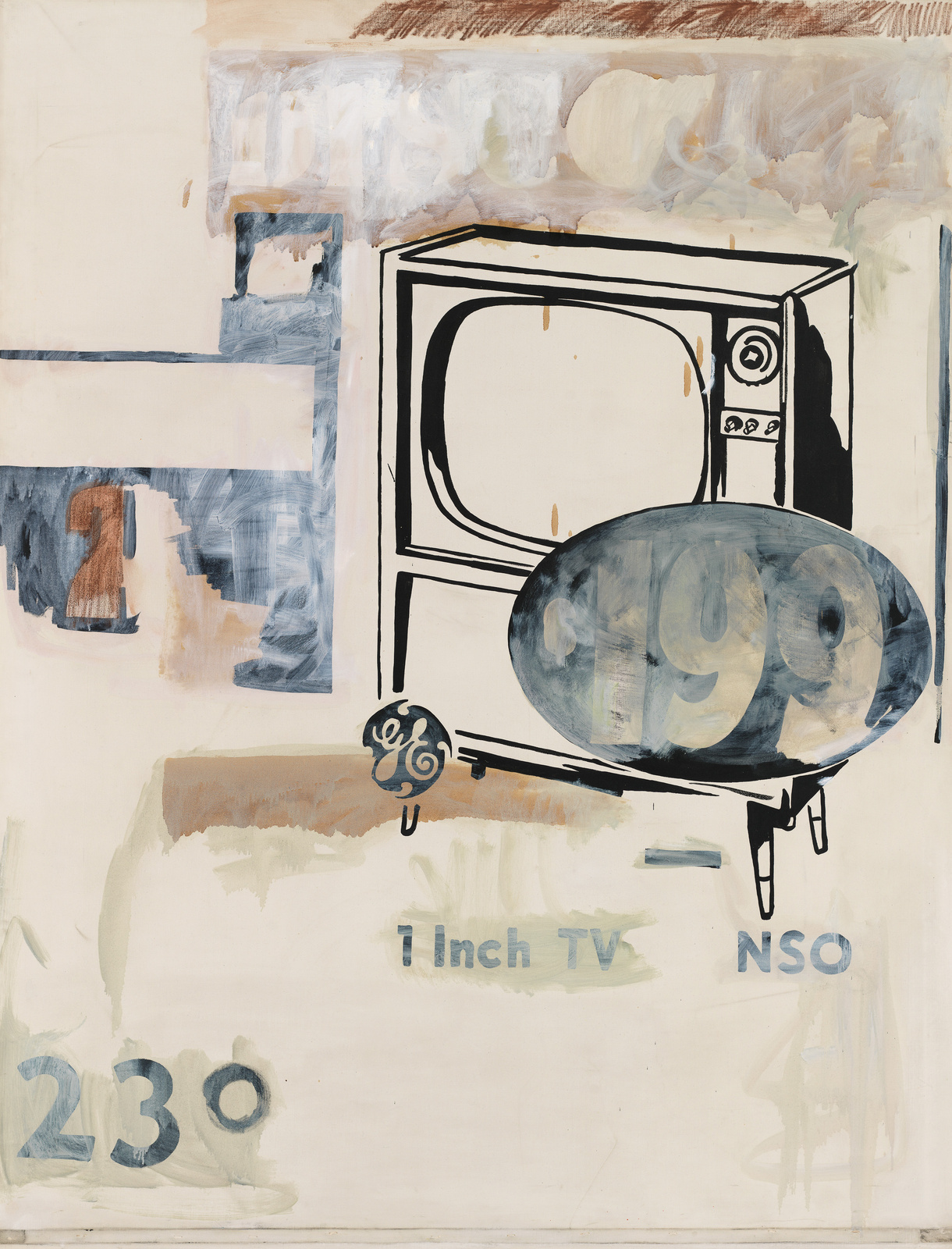On view
Floor 5
Date
c. 1963
Classification
Sculpture
Medium
Sewn and stuffed fabric, wood chair frame, paint
Dimensions
Overall: 34 5/16 × 38 15/16 × 36 5/16in. (87.2 × 98.9 × 92.2 cm)
Accession number
2001.342
Credit line
Whitney Museum of American Art, New York; purchase
Rights and reproductions
© artist or artist's estate
Visual description
Accumulation is a sculpture made by the artist Yayoi Kusama around 1963, and is part of an ongoing series of sculptures by the same name that the artist began in the early 1960s. The armature of this particular sculpture is a wooden armchair, measuring about 3 feet high by 3 feet wide by 3 feet deep. This style of armchair has curved legs in the front, which make it look a bit more elegant and ornate. All over the surface of the chair–on the seat, sides, and back–Kusama has affixed a series of small to medium sized phallic-shaped protrusions. Indeed, Kusama has termed these puffy projections: "phalluses", an identification that, when combined with a domestic object like an armchair, carries both sexualized and gendered stereotypes.
For this particular Accumulation, the protrusions range in size from as small as a fingerling potato to as large as a loaf of bread. These extensions appear almost pillowy and soft, and in fact were produced by the artist individually sewing and stuffing each one, before attaching it to the surface of the chair. In her autobiography, first published in 2002, Kusama noted that producing these phallic forms en masse, almost to the point of the absurd, functioned as an act of "self-therapy", which has helped the artist confront her self-described fear and "disgust of sex". Indeed, there seem to be hundreds of these protrusions that densely populate the entire surface of the armchair, as if they were growing from its surface. These projections become less dense as you move from the top to the bottom of the chair, with only a scattered few on the chair base and none on the legs. Given the clean-curving lines of the chair legs and the empty space beneath it, the sculpture almost seems to hover, looking like some biomorphic form–like coral or stalagmites–emerging from the earth.
This impression is only furthered by the monochromatic white paint the covers the entire surface of the sculpture, both the visible parts of the armchair and the phallic-like protrusions that cover it. The paint also seems to add a certain stiffness to the protrusions themselves, as though they were fixed in space. The overall white color also unifies the entire surface of the sculpture, pointing to Kusama’s own connection to and dialogue with Minimalism, an artistic movement that was prevalent at this time, predominately in the U.S. In addition, the marriage between painting and sculpture in this work points to the artist’s own multimedia practice, which spans painting, sculpture, installation, performance, and beyond.
Audio
-
0:00
Yayoi Kusama, Accumulation, 1963
0:00
Narrador: Kusama llamó a esta escultura Accumulation (Acumulación), haciendo referencia a la proliferación de formas fálicas suaves y mullidas que recubren el sillón. Hay algo surreal en ver un mueble común y corriente trabajado de este modo. Y, naturalmente, hay todo un cambio en la repercusión psíquica que genera el falo cuando hay cientos y cientos de ellos: la forma se vuelve absurda.
En su autobiografía, que se publicó por primera vez en Japón en 2002, Kusama escribió que las esculturas la ayudaban a superar sentimientos de trauma.
“La gente suele asumir que, como hago tantos objetos con esta forma, debo ser una loca del sexo, pero eso es un gran malentendido. Es todo lo contrario: hago estos objetos porque me aterrorizan. Comencé a hacer penes para poder curar la sensación de asco que me produce el sexo. Reproducir estos objetos una y otra vez fue mi forma de dominar ese miedo. Era como hacer terapia conmigo misma, y le di el nombre de ‘arte psicosomático’… Hago una montaña de esculturas blandas con forma de pene y me recuesto entre ellas. Eso hace que lo espantoso se convierta en algo gracioso y entretenido. Soy capaz de deleitarme con mi padecimiento a plena luz del día. Hasta ahora, la cantidad de penes que he hecho alcanza fácilmente los cientos de miles”.
-
0:00
Yayoi Kusama, Accumulation, 1963
0:00
Narrator: Kusama called this sculpture Accumulation, referring to the proliferation of soft, pillowy phallic forms that cover the underlying chair. There’s something surreal about seeing an ordinary piece of furniture treated in this way. And of course the whole psychic resonance of the phallus changes when there are hundreds upon hundreds of them: the form becomes absurd.
In her autobiography—which was first published in Japan in 2002—Kusama wrote that the sculptures helped her work through her feelings of trauma.
“People often assume that I must be mad about sex, because I make so many such objects, but that’s a complete misunderstanding. It’s quite the opposite—I make the objects because they horrify me. I began making penises in order to heal my feelings of disgust towards sex. Reproducing the objects, again and again, was my way of conquering the fear. It was a kind of self-therapy, to which I gave the name ‘psychosomatic art.’ I make a pile of soft sculpture penises and lie down among them. That turns the frightening thing into something funny, something amusing. I’m able to revel in my illness in the dazzling light of day. By now, the number of penises I have made easily reaches into the hundreds of thousands.”
-
0:00
Yayoi Kusama, Accumulation, c. 1963
0:00
Narrator: Kusama called this sculpture Accumulation—referring to the proliferation of soft, pillowy phallic forms that cover the underlying chair. There’s something surreal about seeing an ordinary piece of furniture treated in this way. And of course the whole psychic resonance of the phallus changes when there are hundreds upon hundreds of them: the form becomes absurd.
In her autobiography—which was first published in Japan in 2002—Kusama wrote that the sculptures helped her work through her feelings of trauma.
“People often assume that I must be mad about sex, because I make so many such objects, but that’s a complete misunderstanding. It’s quite the opposite–I make the objects because they horrify me. I began making penises in order to heal my feelings of disgust towards sex. Reproducing the objects, again and again, was my way of conquering the fear. It was a kind of self-therapy, to which I gave the name ‘Psychosomatic art." . . . I make a pile of soft sculpture penises and lie down among them. That turns the frightening thing into something funny, something amusing. I’m able to revel in my illness in the dazzling light of day. By now, the number of penises I have made easily reaches into the hundreds of thousands.”
Exhibitions
Installation photography
-
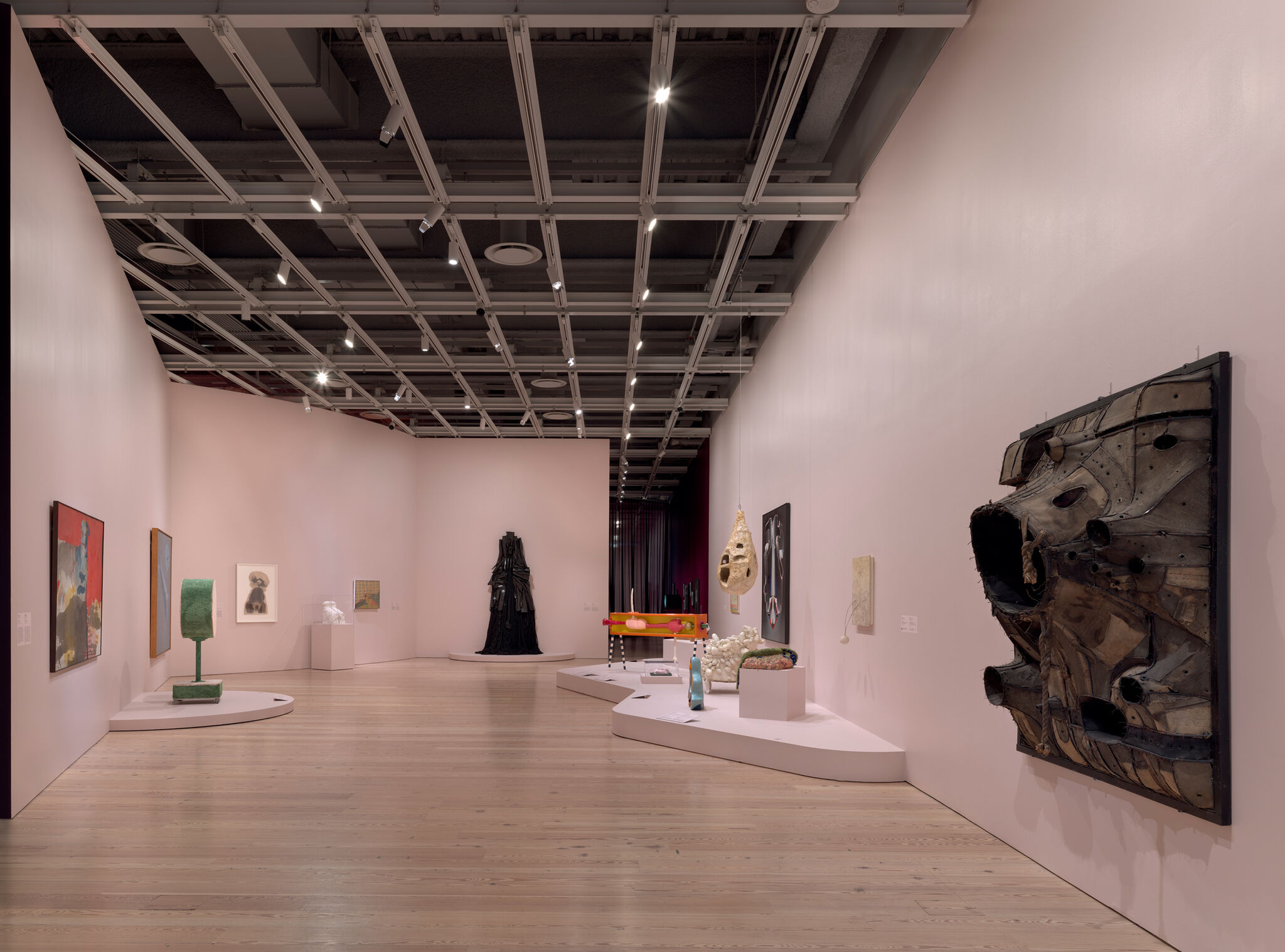

Installation view of Sixties Surreal (Whitney Museum of American Art, New York, September 24, 2025–January 19, 2026). From left to right: Raymond Saunders, Untitled, 1968; William T. Wiley, Shark's Dream, 1967; H.C. Westermann, The Plush, 1963–64; David Hammons, Untitled, 1969; Bruce Nauman, Mold for a Modernized Slant Step, 1966; Franklin Williams, Untitled III, 1966; Barbara Chase-Riboud, Confessions for Myself, 1972; Jeremy Anderson, Riverrun, 1965; Hannah Wilke, Teasel Cushion, 1967; Judy Chicago, In My Mother’s House, c. 1962–64; Yayoi Kusama, Accumulation, c. 1963; Louise Bourgeois, Fée Couturière, 1963; Miyoko Ito, Untitled, 1970; Franklin Williams, Untitled, 1967; Deborah Remington, Haddonfield, 1965; Eva Hesse, C-Clamp Blues, 1965; Lee Bontecou, Untitled, 1961. Artworks © 2025 H.C. Westermann / Artists Rights Society (ARS), NY; © 2025 David Hammons / Artists Rights Society (ARS), NY; © 2025 Bruce Nauman / Artists Rights Society (ARS), NY; © Franklin Williams; © Barbara Chase-Riboud; © Estate of Jeremy Anderson; © 2025 Marsie, Emanuelle, Damon and Andrew Scharlatt, Hannah Wilke Collection & Archive, Los Angeles / Artists Rights Society (ARS), NY; © 2025 Judy Chicago / Artists Rights Society (ARS), NY; © YAYOI KUSAMA; © 2025 The Easton Foundation / Artists Rights Society (ARS), NY; © Estate of Miyoko Ito; © 2025 Deborah Remington Charitable Trust for the Visual Arts / Licensed by VAGA at Artists Rights Society (ARS), NY; © The Estate of Eva Hesse; © Lee Bontecou; Courtesy Michael Rosenfeld Gallery, N.Y. Photograph by Ron Amstutz, digital image © Whitney Museum of American Art
From the exhibition Sixties Surreal
-
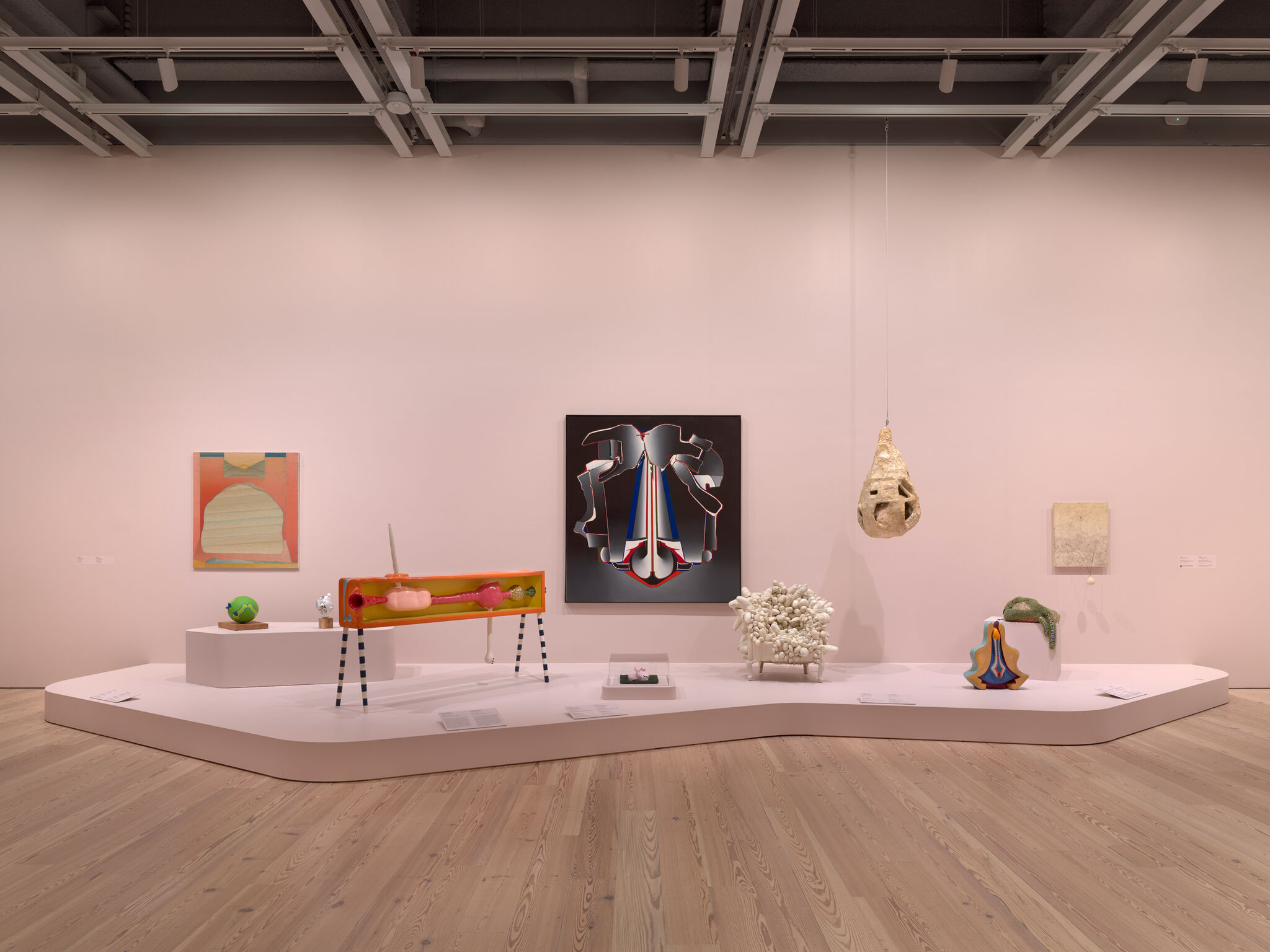

Installation view of Sixties Surreal (Whitney Museum of American Art, New York, September 24, 2025-January 19, 2026). From left to right: Miyoko Ito, Untitled, 1970; Kenneth Price, S.L. Green, 1963; Michael Todd, Fetish 3, 1963; Jeremy Anderson, Riverrun, 1965; Deborah Remington, Haddonfield, 1965; Hannah Wilke, Teasel Cushion, 1967; Yayoi Kusama, Accumulation, c. 1963; Louise Bourgeois, Fée Couturière, 1963; Judy Chicago, In My Mother’s House, c. 1962-64; Franklin Williams, Untitled, 1967; Eva Hesse, C-Clamp Blues, 1965. Artworks © Estate of Miyoko Ito; © Estate of Ken Price, courtesy Matthew Marks Gallery, New York; © Michael Todd; © Estate of Jeremy Anderson; © 2025 Deborah Remington Charitable Trust for the Visual Arts / Licensed by VAGA at Artists Rights Society (ARS), New York; © 2025 Marsie, Emanuelle, Damon and Andrew Scharlatt, Hannah Wilke Collection & Archive, Los Angeles / Artists Rights Society (ARS), NY; © YAYOI KUSAMA; © 2025 The Easton Foundation / Artists Rights Society (ARS), New York; © 2025 Judy Chicago / Artists Rights Society (ARS), New York; © Franklin Williams; © The Estate of Eva Hesse. Photograph by Ron Amstutz, digital image © Whitney Museum of American Art
From the exhibition Sixties Surreal
-
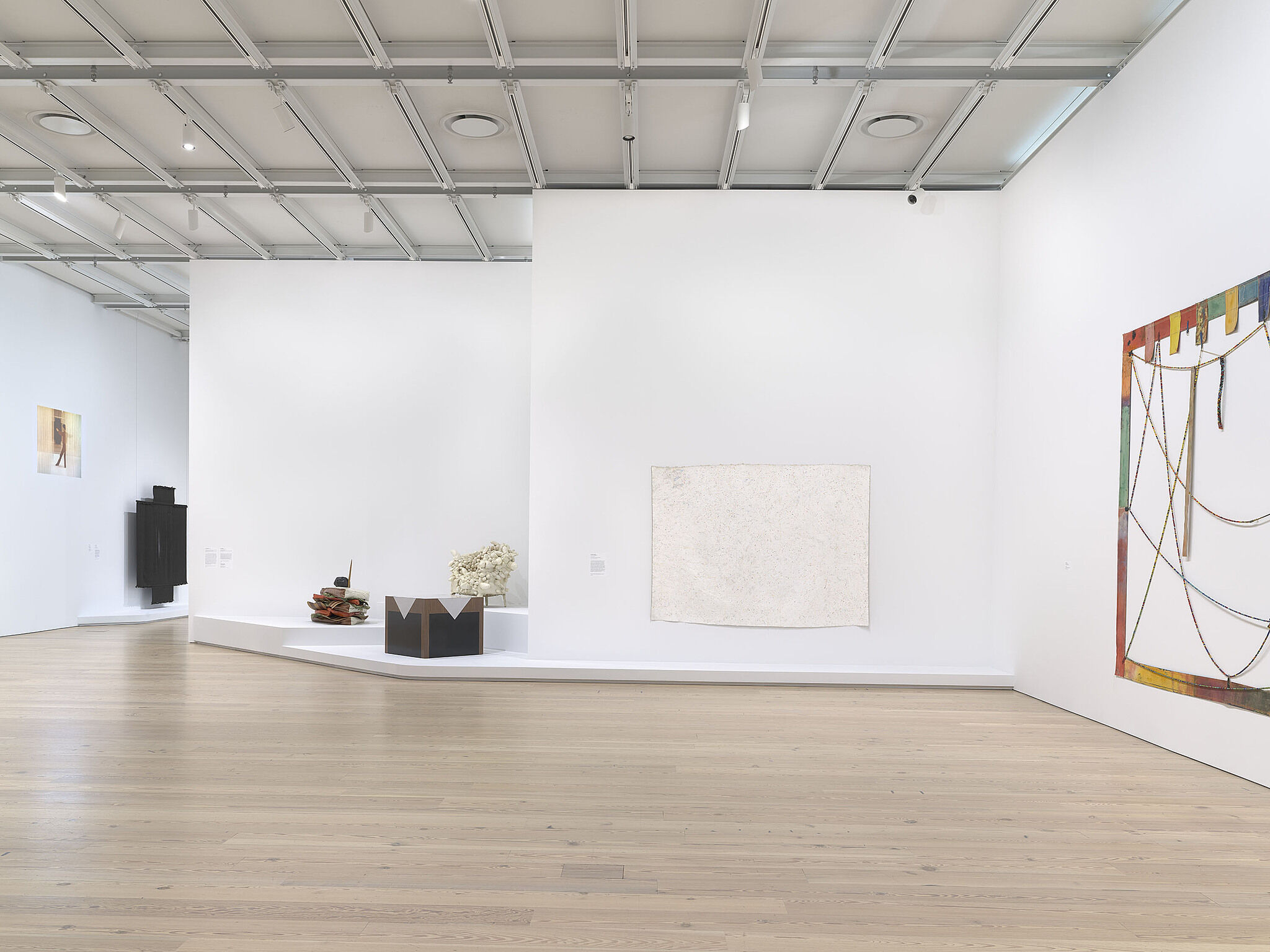

Installation view of Making Knowing: Craft in Art, 1950–2019 (Whitney Museum of American Art, New York, November 22, 2019–January 2021). From left to right: Robyn Brentano and Andrew Horn, Cloud Dance, 1979; Lenore G. Tawney, Four Petaled Flower II, 1974; Claes Oldenburg, Giant BLT (Bacon, Lettuce, and Tomato Sandwich), 1963; Yayoi Kusama, Accumulation, c. 1963; Howardena Pindell, Untitled, 1974–75; Alan Shields, J + K, 1972. Photograph by Ron Amstutz
From the exhibition Making Knowing: Craft in Art, 1950–2019
-
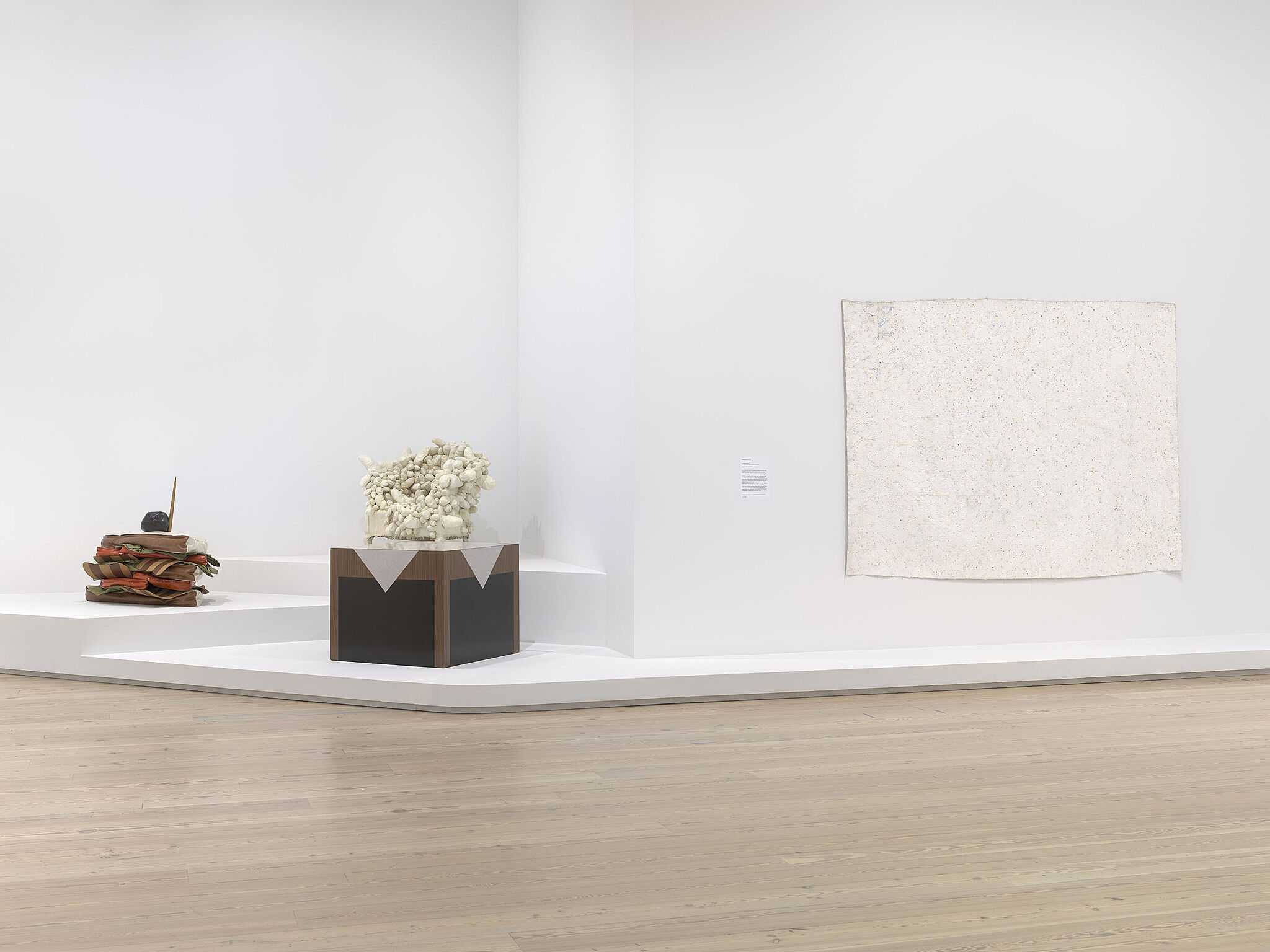

Installation view of Making Knowing: Craft in Art, 1950–2019 (Whitney Museum of American Art, New York, November 22, 2019–January 2021). From left to right: Claes Oldenburg, Giant BLT (Bacon, Lettuce, and Tomato Sandwich), 1963; Richard Artschwager, Description of Table, 1964; Yayoi Kusama, Accumulation, c. 1963; Howardena Pindell, Untitled, 1974–75. Photograph by Ron Amstutz
From the exhibition Making Knowing: Craft in Art, 1950–2019
-
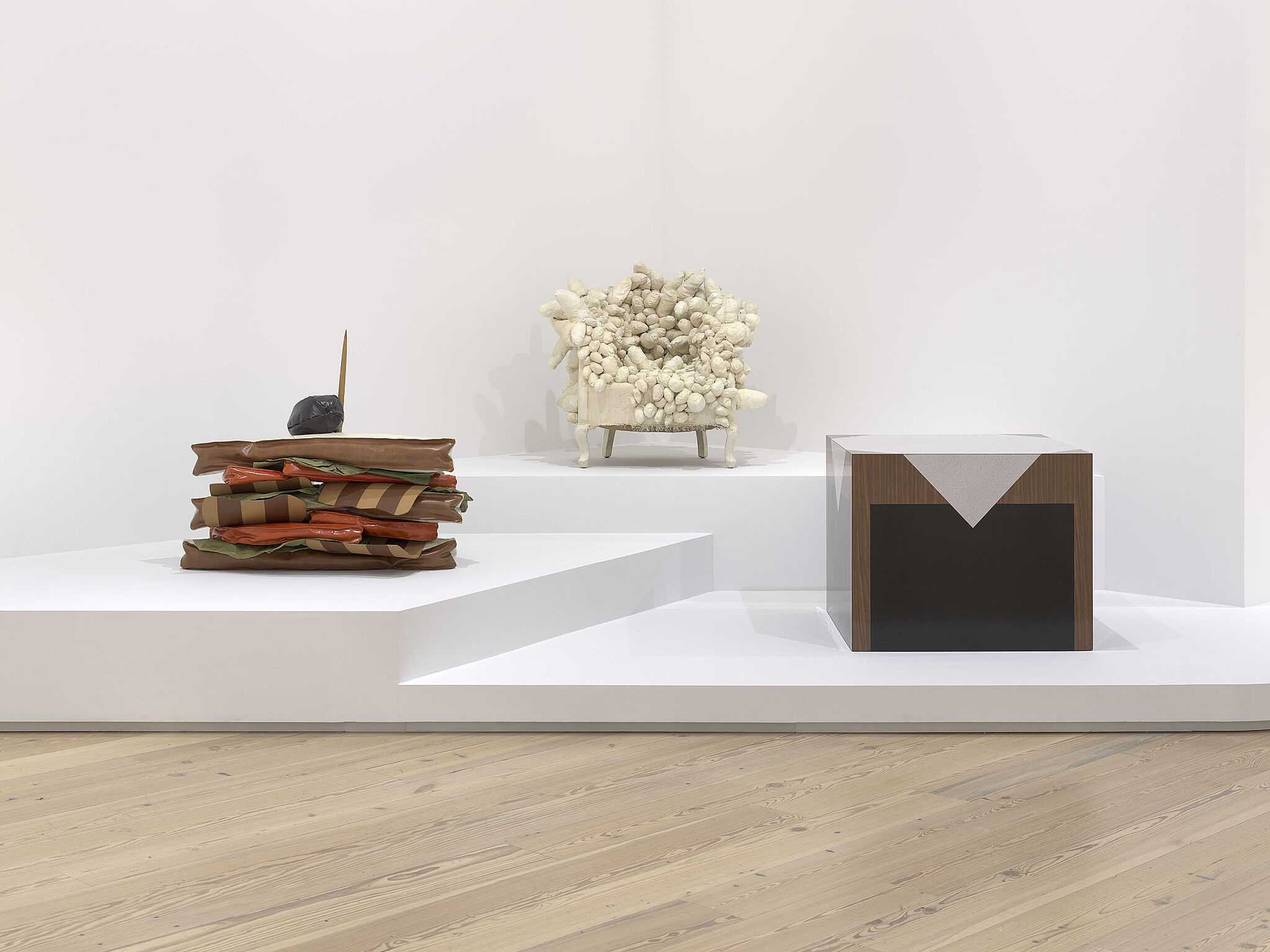

Installation view of Making Knowing: Craft in Art, 1950–2019 (Whitney Museum of American Art, New York, November 22, 2019–January 2021). From left to right: Claes Oldenburg, Giant BLT (Bacon, Lettuce, and Tomato Sandwich), 1963; Yayoi Kusama, Accumulation, c. 1963; Richard Artschwager, Description of Table, 1964. Photograph by Ron Amstutz
From the exhibition Making Knowing: Craft in Art, 1950–2019

